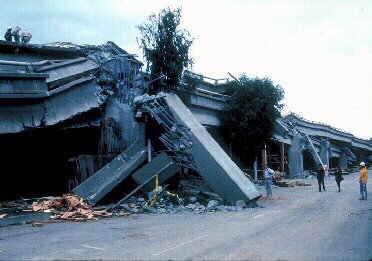Ferries built out of state could cost state less
Washington State Ferries could save millions of dollars by opening new ferry construction to shipyards outside the state, slowing the vessel speed and idling slower at the docks.
By Susan Gilmore
Seattle Times staff reporter
Washington State Ferries could save millions of dollars by opening new ferry construction to shipyards outside the state, slowing the vessel speed and idling slower at the docks.
Further, the state should put off building two new 144-car boats and instead build four like the 64-car boat planned for the Port Townsend-Keystone route.
Those findings were presented Monday to the Joint Transportation Committee (JTC), by consultant Kathy Scanlan of the Cedar River Group, a public-policy consultant used frequently by the ferry service.
The JTC, comprised of state lawmakers, was created during the 2005 legislative session to review and research transportation programs and make recommendations to the Legislature and state government.
Consultant and naval architect John Boylston, who contracts with the Cedar River Group and the JTC, also briefed the lawmakers, saying the state could save 20 percent in ferry-building costs if the bids were open to any U.S. shipyard. Currently, bids are accepted only from Washington shipyards.
He said in Mississippi labor is 20 percent cheaper than here, and steel prices here can be 30 percent higher than on the Gulf Coast.
Boylston said Halter Shipyards in Mississippi built the first Island Home, a model being considered for the Port Townsend boat which is now in use in New England. Halter told him it could build a Washington Island Home ferry for $47 million, far below the single $65 million bid offered last week by Todd Pacific Shipyards in Seattle.
But what Todd and Boylston said drove up the cost, in part, was the state's 18-month construction schedule — something Boylston said is impossible for any shipyard to meet. If Todd gets the bid, it will pay $6,000 each day it is late.
Boylston said Todd's bid seemed reasonable. The Halter estimate didn't include extra design work, required bonds, which would add $2 million to the price, an estimated $2 million to bring the boat to Washington and the estimated $2 million penalty Todd will face for a delivery one year late — which Boylston said is certain to happen.
The state plans to decide in the next two weeks whether to accept Todd's bid.
In other findings given to the JTC by Scanlan:
• Reducing vessel speed by 1 knot (1 knot equals about 1.15 mph) could save $6 million a year — 12 percent of fuel costs — although it could affect schedules. Slowing idle speeds at the dock from 60 rpms to 30 could save $27 million between 2009 and 2030.
advertising
• The state should put off until 2021-2030 construction of two of proposed six new 144-car boats now in the design phase, and instead build four Island Home boats to serve Port Townsend, Point Defiance and the San Juan Island inter-island route.
• The state's cost estimate for the 144-car boats is low. The state's estimate is $115 million per boat in 2008 dollars; the consultants put the cost at $135 million.
The JTC was also given ferries' new customer survey, Monday. It found:
• There's been a sharp drop in commute trips on the ferries, from 68 percent of the total in 1993 to 48 percent this year.
• Ferry fares could rise as much as 60 percent before the cost of lost riders exceeded revenue from higher fares.
• Fewer than one in 10 riders say they could change their travel habits to avoid peak commutes.
• A 20 percent fare increase would decrease those driving on the ferries by 9 percent, increase those walking on by 9 percent and increase the percentage of those who wouldn't take the trip by 53 percent.
• When asked important issues on their ferry-riding decision, time was three times as important as cost.
The phrase,'Unsound Transit', was coined by the Wall Street Journal to describe Seattle where,"Light Rail Madness eats billions that could otherwise be devoted to truly efficient transportation technologies." The Puget Sound's traffic congestion is a growing cancer on the region's prosperity. This website, captures news and expert opinion about ways to address the crisis. This is not a blog, but a knowledge base, which collects the best articles and presents them in a searchable format. My goal is to arm residents with knowledge so they can champion fact-based, rather than emotional, solutions.
Transportation
Tuesday, November 18, 2008
Washington State Ferries plans to save money by building boats out of state
Labels:
1.44 WS Ferries
The articles are posted solely for educational purposes to raise awareness of transportation issues. I claim no authorship, nor do I profit from this website. Where known, all original authors and/or source publisher have been noted in the post. As this is a knowledge base, rather than a blog, I have reproduced the articles in full to allow for complete reader understanding and allow for comprehensive text searching...see custom google search engine at the top of the page. If you have concerns about the inclusion of a specific article, please email bbdc1@live.com. for a speedy resolution.









